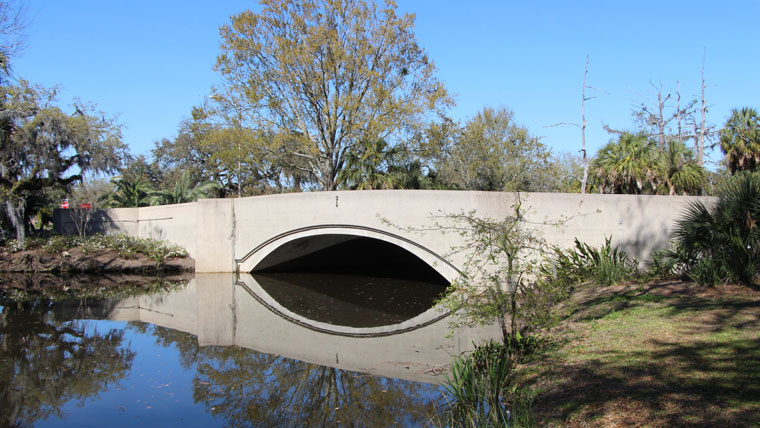Mead & Hunt engineers and historians routinely collaborate to assist agencies with managing their historic bridges. This includes identifying bridges eligible for listing on the National Register of Historic Places (NRHP), analyzing historic bridges to determine those most apt for preservation, and preparing bridge management plans.
As bridges age and are subject to larger loads than originally designed for, agencies need to account for these structures as they plan their transportation program. Managing their historic bridge inventory can be a challenge while efficiently meeting the needs of their users. Planning in advance is often vital to achieving their goals. Our team has extensive experience helping agencies plan ahead to overcome the challenges they face, including:
Avoiding delays in schedule. Many bridges are eligible for the NRHP due to their historic and/or engineering significance. Various environmental laws govern these structures, including Section 106 of the National Historic Preservation Act and Section 4(f) of the Department of Transportation Act. Sometimes, projects are developed to rehabilitate or replace a bridge that is later determined to be eligible for the NRHP, causing delay and added cost. Planning ahead can streamline the process by identifying historic bridges early, which can help agencies complete a successful project within the anticipated cost and schedule.
Meeting funding requirements. Agencies are often stretched to deliver a transportation program, and funds dedicated to preserving historic structures are not readily available. New funding sources periodically become available, but these often require projects to be “shovel-ready” as part of their eligibility. Planning ahead can help agencies be prepared to take advantage of available funds. This can streamline environmental requirements, allowing completion of projects in a timely manner.
Achieving balance between goals. It can be difficult to achieve a balance between the goals of engineers who strive to meet current standards and historians who aim to preserve our country’s engineering heritage. Planning ahead is vital to allow sufficient time to find the balance between transportation and preservation needs using performance-based practical design principals.
Planning ahead in practice
The Colorado Department of Transportation (CDOT) recently sought Mead & Hunt’s help with managing their historic bridges. Despite several successful preservation projects, they had identified an attrition of many significant bridge types which did not meet current design standards. Using National Bridge Inventory (NBI) data, Mead & Hunt historians and engineers helped CDOT by identifying those historic bridges most suitable for preservation. This was based on the bridge’s current condition, rehabilitation needs, geometrics, traffic volume, load carrying capacity, and scour susceptibility. The structure type, historical context, and geographic location were also considered to identify bridges for long-term preservation.
Similarly, our team helped the Louisiana Department of Transportation & Development (LADOTD) to identify historic bridges most suitable for preservation. This led to a Programmatic Agreement between LADOTD, Federal Highway Administration (FHWA), Advisory Council on Historic Preservation and Louisiana State Historic Preservation Office outlining FHWA and LADOTD’s responsibilities for historic bridges within Louisiana. This includes procedures for rehabilitation projects, definition of acceptable preventative maintenance and preservation activities that comply with the SOI standards, and processes to evaluate rehabilitation and replacement alternatives.
Key takeaways
Through these efforts, these agencies have been able to efficiently advance their transportation program while satisfying environmental requirements. The success of these projects was, in part, based on the help our team provided the agencies to plan the process well in advance.



